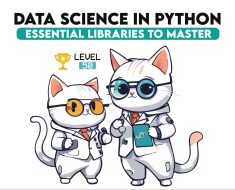Chen, X. et al. Drug–target interaction prediction: databases, web servers and computational models. Brief. Bioinform. 17(4), 696–712 (2016).
Chou, T.-C. Theoretical basis, experimental design, and computerized simulation of synergism and antagonism in drug combination studies. Pharmacol. Rev. 58(3), 621–681 (2006).
Kelly, R. J. et al. A pharmacodynamic study of docetaxel in combination with the P-glycoprotein antagonist tariquidar (XR9576) in patients with lung, ovarian, and cervical cancer. Clin. Cancer Res. 17(3), 569–580 (2011).
Chen, X. et al. ASDCD: Antifungal synergistic drug combination database. PLoS ONE 9(1), e86499 (2014).
Fitzgerald, J. B., Schoeberl, B., Nielsen, U. B. & Sorger, P. K. Systems biology and combination therapy in the quest for clinical efficacy. Nat. Chem. Biol. 2(9), 458–466 (2006).
Zimmermann, G. R., Lehar, J. & Keith, C. T. Multi-target therapeutics: When the whole is greater than the sum of the parts. Drug Discov. Today 12(1–2), 34–42 (2007).
Borisy, A. A. et al. Systematic discovery of multicomponent therapeutics. Proc. Natl. Acad. Sci. 100(13), 7977–7982 (2003).
Levy, S. B. & Marshall, B. Antibacterial resistance worldwide: Causes, challenges and responses. Nat. Med. 10(12), S122–S129 (2004).
Groll, A. H. & Walsh, T. J. Antifungal chemotherapy: Advances and perspectives. Swiss Med. Wkly. 132(2324), 303 (2002).
Xu, K. -J., Hu, F. -Y., Song, J. & Zhao, X. -M. Exploring drug combinations in a drug-cocktail network. In 2011 IEEE International Conference on Systems Biology (ISB) 382–387 (2011).
Zhang, L. et al. High-throughput synergy screening identifies microbial metabolites as combination agents for the treatment of fungal infections. Proc. Natl. Acad. Sci. 104(11), 4606–4611 (2007).
Chen, X. et al. NLLSS: Predicting synergistic drug combinations based on semi-supervised learning. PLoS Comput. Biol. 12(7), e1004975 (2016).
Kong, W. et al. Systematic review of computational methods for drug combination prediction. Comput. Struct. Biotechnol. J. 20, 2807–2814. https://doi.org/10.1016/j.csbj.2022.05.055 (2022).
Mokhtari, R. B. et al. Combination therapy in combating cancer. Oncotarget 8(23), 38022 (2017).
Gilad, Y., Gellerman, G., Lonard, D. M. & O’malley, B. W. Drug combination in cancer treatment—From cocktails to conjugated combinations. Cancers 13(4), 1–26. https://doi.org/10.3390/cancers13040669 (2021).
Sidorov, P., Naulaerts, S., Ariey-Bonnet, J., Pasquier, E. & Ballester, P. J. Predicting synergism of cancer drug combinations using NCI-ALMANAC data. Front. Chem. 7(July), 1–13. https://doi.org/10.3389/fchem.2019.00509 (2019).
DiMasi, J. A., Hansen, R. W. & Grabowski, H. G. The price of innovation: new estimates of drug development costs. J. Health Econ. 22(2), 151–185. https://doi.org/10.1016/S0167-6296(02)00126-1 (2003).
Lehár, J. et al. Chemical combination effects predict connectivity in biological systems. Mol. Syst. Biol. 3(1), 80 (2007).
Jansen, G. et al. Chemogenomic profiling predicts antifungal synergies. Mol. Syst. Biol. 5(1), 338 (2009).
Loewe, S. The problem of synergism and antagonism of combined drugs. Arzneimittelforschung 3, 285–290 (1953).
Loewe, S. Effect of combinations: Mathematical basis of problem. Arch. Exp. Pathol. Pharmakol. 114, 313–326 (1926).
Bliss, C. I. The toxicity of poisons applied jointly 1. Ann. Appl. Biol. 26(3), 585–615 (1939).
Chou, T.-C. & Talalay, P. Analysis of combined drug effects: A new look at a very old problem. Trends Pharmacol. Sci. 4, 450–454 (1983).
Chou, T. C. Quantitative dose-effect analysis and algorithms-a theoretical-study. Asia Pac. J. Pharmacol. 2(2), 93–99 (1987).
Chou, T.-C. & Talalay, P. Quantitative analysis of dose-effect relationships: The combined effects of multiple drugs or enzyme inhibitors. Adv. Enzyme Regul. 22, 27–55 (1984).
Chou, T. C. Comparison of mass-action law with power law, probit law and logit law in dose-effect analyses. In Pharmacologist 165 (1977).
Chou, T.-C. Derivation and properties of Michaelis–Menten type and Hill type equations for reference ligands. J. Theor. Biol. 59(2), 253–276 (1976).
Greco, W. R., Park, H. S. & Rustum, Y. M. Application of a new approach for the quantitation of drug synergism to the combination of cis-diamminedichloroplatinum and 1-$β$-d-arabinofuranosylcytosine. Cancer Res. 50(17), 5318–5327 (1990).
Chen, C. H. et al. Statistical metamodeling for revealing synergistic antimicrobial interactions. PloS ONE 5(11), e15472 (2010).
Li, S., Zhang, B. & Zhang, N. Network target for screening synergistic drug combinations with application to traditional Chinese medicine. BMC Syst. Biol. 5(1), 1–13 (2011).
Zhao, X.-M. et al. Prediction of drug combinations by integrating molecular and pharmacological data. PLoS Comput. Biol. 7(12), e1002323 (2011).
Huang, H., Zhang, P., Qu, X. A., Sanseau, P. & Yang, L. Systematic prediction of drug combinations based on clinical side-effects. Sci. Rep. 4(1), 1–7 (2014).
Yin, N. et al. Synergistic and antagonistic drug combinations depend on network topology. PloS ONE 9(4), e93960 (2014).
Iwata, H., Sawada, R., Mizutani, S., Kotera, M. & Yamanishi, Y. Large-scale prediction of beneficial drug combinations using drug efficacy and target profiles. J. Chem. Inf. Model. 55(12), 2705–2716 (2015).
Chen, D., Zhang, H., Lu, P., Liu, X. & Cao, H. Synergy evaluation by a pathway–pathway interaction network: A new way to predict drug combination. Mol. Biosyst. 12(2), 614–623 (2016).
Sun, Y. et al. Combining genomic and network characteristics for extended capability in predicting synergistic drugs for cancer. Nat. Commun. 6(1), 1–10 (2015).
Li, X. et al. Prediction of synergistic anti-cancer drug combinations based on drug target network and drug induced gene expression profiles. Artif. Intell. Med. 83, 35–43 (2017).
Huang, L. et al. DrugComboRanker: Drug combination discovery based on target network analysis. Bioinformatics 30(12), i228–i236 (2014).
Malyutina, A. et al. Drug combination sensitivity scoring facilitates the discovery of synergistic and efficacious drug combinations in cancer. PLoS Comput. Biol. 15(5), e1006752 (2019).
Jiang, P. et al. Deep graph embedding for prioritizing synergistic anticancer drug combinations. Comput. Struct. Biotechnol. J. 18, 427–438. https://doi.org/10.1016/j.csbj.2020.02.006 (2020).
Liu, Q. & Xie, L. TranSynergy: Mechanism-driven interpretable deep neural network for the synergistic prediction and pathway deconvolution of drug combinations. PLoS Comput. Biol. 17(2), e1008653 (2021).
Liu, Y., Wei, Q., Yu, G., Gai, W., Li, Y. & Chen, X. DCDB 2.0: A major update of the drug combination database. Database 2014 (2014).
Bansal, M. et al. A community computational challenge to predict the activity of pairs of compounds. Nat. Biotechnol. 32(12), 1213–1222 (2014).
Xia, F. et al. Predicting tumor cell line response to drug pairs with deep learning. BMC Bioinform. 19(18), 71–79 (2018).
Holbeck, S. L. et al. The National Cancer Institute ALMANAC: A comprehensive screening resource for the detection of anticancer drug pairs with enhanced therapeutic activity. Cancer Res. 77(13), 3564–3576 (2017).
O’Neil, J. et al. An unbiased oncology compound screen to identify novel combination strategies. Mol. Cancer Ther. 15(6), 1155–1162. https://doi.org/10.1158/1535-7163.MCT-15-0843 (2016).
Chen, X., Guan, N.-N., Sun, Y.-Z., Li, J.-Q. & Qu, J. MicroRNA-small molecule association identification: From experimental results to computational models. Brief. Bioinform. 21(1), 47–61. https://doi.org/10.1093/bib/bby098 (2020).
Wang, C.-C., Zhao, Y. & Chen, X. Drug-pathway association prediction: From experimental results to computational models. Brief. Bioinform. 22(3), bbaa061. https://doi.org/10.1093/bib/bbaa061 (2021).
K. Hazelwood et al. Applied machine learning at facebook: A datacenter infrastructure perspective. In 2018 IEEE International Symposium on High Performance Computer Architecture (HPCA) 620–629 (2018).
Langley, P. et al. Selection of relevant features in machine learning. In Proceedings of the AAAI Fall Symposium on Relevance 245–271 (1994).
Breiman, L. Random forests. Mach. Learn. 45(1), 5–32 (2001).
Le Cessie, S. & Van Houwelingen, J. C. Ridge estimators in logistic regression. J. R. Stat. Soc. Ser. C (Appl. Stat.) 41(1), 191–201 (1992).
Kumari, R. & Jose, J. Seizure detection in EEG using biorthogonal wavelet and fuzzy KNN classifier. Elixir Hum. Physiol. 41, 5766–5770 (2011).
Altay, O. & Ulas, M. Prediction of the autism spectrum disorder diagnosis with linear discriminant analysis classifier and K-nearest neighbor in children. In 2018 6th International Symposium on Digital Forensic and Security (ISDFS) 1–4 (2018).
Kleinbaum, D. G., Kupper, L. L., Nizam, A. & Rosenberg, E. S. Applied Regression Analysis and Other Multivariable Methods (Cengage Learning, 2013).
Costello, J. C. et al. A community effort to assess and improve drug sensitivity prediction algorithms. Nat. Biotechnol. 32(12), 1202–1212 (2014).
Hoerl, A. E. & Kennard, R. W. Ridge regression: Biased estimation for nonorthogonal problems. Technometrics 12(1), 55–67 (1970).
Wan, Q. & Pal, R. An ensemble based top performing approach for NCI-DREAM drug sensitivity prediction challenge. PloS ONE 9(6), e101183 (2014).
Julkunen, H. et al. Leveraging multi-way interactions for systematic prediction of pre-clinical drug combination effects. Nat. Commun. 11(1), 1–11 (2020).
Ling, A. & Huang, R. S. Computationally predicting clinical drug combination efficacy with cancer cell line screens and independent drug action. Nat. Commun. 11(1), 1–13 (2020).
Preuer, K. et al. DeepSynergy: Predicting anti-cancer drug synergy with Deep Learning. Bioinformatics 34(9), 1538–1546 (2018).
Ianevski, A. et al. Prediction of drug combination effects with a minimal set of experiments. Nat. Mach. Intell. 1(12), 568–577 (2019).
Zhai, J., Zhang, S. & Wang, C. The classification of imbalanced large data sets based on MapReduce and ensemble of ELM classifiers. Int. J. Mach. Learn. Cybern. 8(3), 1009–1017 (2017).
Raschka, S. An Overview of General Performance Metrics of Binary Classifier Systems. arXiv preprint arXiv:1410.5330 (2014).
Tarek, Z. et al. Wind power prediction based on machine learning and deep learning models. Comput. Mater. Contin. https://doi.org/10.32604/cmc.2023.032533 (2023).
Asteris, P. G. et al. On the metaheuristic models for the prediction of cement-metakaolin mortars compressive strength. 1 1(1), 63 (2020).
St, L. & Wold, S. Analysis of variance (ANOVA). Chemom. Intell. Lab. Syst. 6(4), 259–272 (1989).
Wooditch, A., Johnson, N. J., Solymosi, R., Ariza, J. M. & Langton, S. Analysis of variance (ANOVA). In A Beginner’s Guide to Statistics for Criminology and Criminal Justice Using R (eds Wooditch, A. et al.) 183–208 (Springer, 2021).
Li, T.-H., Wang, C.-C., Zhang, L. & Chen, X. SNRMPACDC: Computational model focused on Siamese network and random matrix projection for anticancer synergistic drug combination prediction. Brief. Bioinform. 24(1), bbac503. https://doi.org/10.1093/bib/bbac503 (2023).
Huang, C., Su, Q., Ding, Z., Zeng, W. & Zhou, Z. A novel clinical tool to predict cancer-specific survival in patients with primary pelvic sarcomas: A large population-based retrospective cohort study. Cancer Med. 12(2), 1279–1292. https://doi.org/10.1002/cam4.4998 (2023).
Zhang, H. et al. Harmonizing across datasets to improve the transferability of drug combination prediction. Commun. Biol. https://doi.org/10.1038/s42003-023-04783-5 (2023).
Kuru, H. I., Tastan, O. & Cicek, A. E. MatchMaker: A deep learning framework for drug synergy prediction. IEEE/ACM Trans. Comput. Biol. Bioinform. 19(4), 2334–2344. https://doi.org/10.1109/TCBB.2021.3086702 (2022).
Zagidullin, B. et al. DrugComb: An integrative cancer drug combination data portal. Nucl. Acids Res. 47(W1), W43–W51. https://doi.org/10.1093/nar/gkz337 (2019).
Tang, Y.-C. & Gottlieb, A. SynPathy: Predicting drug synergy through drug-associated pathways using deep learning. Mol. Cancer Res. 20(5), 762–769. https://doi.org/10.1158/1541-7786.MCR-21-0735 (2022).
El Khili, M. R., Memon, S. A. & Emad, A. MARSY: A multitask deep-learning framework for prediction of drug combination synergy scores. Bioinformatics 39(4), btad177 (2023).
Guertin, A. D. et al. Unique functions of CHK1 and WEE1 underlie synergistic anti-tumor activity upon pharmacologic inhibition. Cancer Cell Int. 12(1), 45. https://doi.org/10.1186/1475-2867-12-45 (2012).
Muellner, M. K. et al. A chemical-genetic screen reveals a mechanism of resistance to PI3K inhibitors in cancer. Nat. Chem. Biol. https://doi.org/10.1038/nchembio.695 (2011).
Kristina Preuer. Deep Learning in Drug Discovery. Johannes Kepler University Linz, Institue for Machine Learning. Accessed: November 01 2024. [Online]. Available: https://epub.jku.at/obvulihs/content/titleinfo/3853666 (2019).
Chung, S. W. et al. Metronomic oral doxorubicin in combination of Chk1 inhibitor MK-8776 for p53-deficient breast cancer treatment. Biomaterials 182, 35–43. https://doi.org/10.1016/j.biomaterials.2018.08.007 (2018).
Montano, R. et al. Sensitization of human cancer cells to gemcitabine by the Chk1 inhibitor MK-8776: Cell cycle perturbation and impact of administration schedule in vitro and in vivo. BMC Cancer 13(1), 604. https://doi.org/10.1186/1471-2407-13-604 (2013).
Howard, D. et al. Dinaciclib as an effective pan-cyclin dependent kinase inhibitor in platinum resistant ovarian cancer. Front. Oncol. https://doi.org/10.3389/fonc.2022.1014280 (2022).
Zhang, T., Zhang, L., Payne, P. R. O. & Li, F. Synergistic drug combination prediction by integrating multiomics data in deep learning models. In Translational Bioinformatics for Therapeutic Development in Methods in Molecular Biology (ed. Markowitz, J.) 223–238 (Springer US, 2021). https://doi.org/10.1007/978-1-0716-0849-4_12.
Liu, X. et al. Multi-way relation-enhanced hypergraph representation learning for anti-cancer drug synergy prediction. Bioinformatics 38(20), 4782–4789. https://doi.org/10.1093/bioinformatics/btac579 (2022).
Bukhari, A. B., Chan, G. K. & Gamper, A. M. Targeting the DNA damage response for cancer therapy by inhibiting the kinase WEE1. Front. Oncol. https://doi.org/10.3389/fonc.2022.828684 (2022).
Vlot, A. H. C., Aniceto, N., Menden, M. P., Ulrich-Merzenich, G. & Bender, A. Applying synergy metrics to combination screening data: Agreements, disagreements and pitfalls. Drug Discov. Today 24(12), 2286–2298. https://doi.org/10.1016/j.drudis.2019.09.002 (2019).
Chien, W. et al. Treatment for ovarian clear cell carcinoma with combined inhibition of WEE1 and ATR. J. Ovarian Res. 16(1), 80. https://doi.org/10.1186/s13048-023-01160-y (2023).
Duran, I. et al. Phase I targeted combination trial of sorafenib and erlotinib in patients with advanced solid tumors. Clin. Cancer Res. 13(16), 4849–4857. https://doi.org/10.1158/1078-0432.CCR-07-0382 (2007).
Lee, Y. J. et al. A phase II trial to evaluate the efficacy of Bortezomib and liposomal doxorubicin in patients with BRCA Wild-type platinum-resistant recurrent ovarian cancer (KGOG 3044/EBLIN). In Vivo 36(4), 1949–1958. https://doi.org/10.21873/invivo.12917 (2022).
Bi, S. et al. WEE1 inhibitor AZD1775 effectively inhibits the malignant phenotypes of esophageal squamous cell carcinoma in vitro and in vivo. Front. Pharmacol. https://doi.org/10.3389/fphar.2019.00864 (2019).
Lane, M. et al. In vivo synergy between oncolytic reovirus and gemcitibane in ras-mutated human HCT116 xenografts. Cancer Res. 67(9_Supplement), 4812 (2007).
Patil, V. M. et al. Beyond conventional chemotherapy, targeted therapy and immunotherapy in squamous cell cancer of the oral cavity. Oral Oncol. 105, 104673. https://doi.org/10.1016/j.oraloncology.2020.104673 (2020).
Sakurikar, N., Thompson, R., Montano, R. & Eastman, A. A subset of cancer cell lines is acutely sensitive to the Chk1 inhibitor MK-8776 as monotherapy due to CDK2 activation in S phase. Oncotarget 7(2), 1380–1394 (2015).
Parsels, L. A. et al. The contribution of DNA replication stress marked by high-intensity, pan-nuclear γH2AX staining to chemosensitization by CHK1 and WEE1 inhibitors. Cell Cycle 17(9), 1076–1086. https://doi.org/10.1080/15384101.2018.1475827 (2018).
Tai, C.-J. Salvage therapy with sorafenib plus vinblastine and fluorouracil for metastatic renal cell carcinoma. Acta Oncol. 48(6), 931–932. https://doi.org/10.1080/02841860903071351 (2009).
Kuhn, D. J. et al. Targeting the insulin-like growth factor-1 receptor to overcome bortezomib resistance in preclinical models of multiple myeloma. Blood 120(16), 3260–3270. https://doi.org/10.1182/blood-2011-10-386789 (2012).
Yang, X. et al. Topical kinase inhibitors induce regression of cutaneous squamous cell carcinoma. Exp. Dermatol. 28(5), 609–613. https://doi.org/10.1111/exd.13902 (2019).
Meng, X. et al. AZD1775 increases sensitivity to olaparib and gemcitabine in cancer cells with p53 mutations. Cancers https://doi.org/10.3390/cancers10050149 (2018).
Moreira, D. C. et al. Targeting MYC-driven replication stress in medulloblastoma with AZD1775 and gemcitabine. J. Neurooncol. 147(3), 531–545. https://doi.org/10.1007/s11060-020-03457-0 (2020).
Yoo, J. Y. et al. Bortezomib-induced unfolded protein response increases oncolytic HSV-1 Replication resulting in synergistic antitumor effects. Clin. Cancer Res. 20(14), 3787–3798. https://doi.org/10.1158/1078-0432.CCR-14-0553 (2014).
Polley, E. et al. Small cell lung cancer screen of oncology drugs, investigational agents, and gene and microRNA expression. J. Natl. Cancer Inst. 108(10), djw122 (2016).
Sen, T., Gay, C. M. & Byers, L. A. Targeting DNA damage repair in small cell lung cancer and the biomarker landscape. Transl. Lung Cancer Res. 7(1), 50–68. https://doi.org/10.21037/tlcr.2018.02.03 (2018).
Lin, A. B., McNeely, S. C. & Beckmann, R. P. Achieving precision death with cell-cycle inhibitors that target DNA replication and repair. Clin. Cancer Res. 23(13), 3232–3240. https://doi.org/10.1158/1078-0432.CCR-16-0083 (2017).
Tanaka, N. et al. Replication stress leading to apoptosis within the S-phase contributes to synergism between vorinostat and AZD1775 in HNSCC harboring high-risk TP53 mutation. Clin. Cancer Res. 23(21), 6541–6554. https://doi.org/10.1158/1078-0432.CCR-17-0947 (2017).
He, L. et al. Methods for high-throughput drug combination screening and synergy scoring. In Cancer Systems Biology: Methods and Protocols in Methods in Molecular Biology (ed. von Stechow, L.) 351–398 (Springer, 2018). https://doi.org/10.1007/978-1-4939-7493-1_17.
Danishuddin, & Khan, A. U. Descriptors and their selection methods in QSAR analysis: Paradigm for drug design. Drug Discov. Today 21(8), 1291–1302. https://doi.org/10.1016/j.drudis.2016.06.013 (2016).





